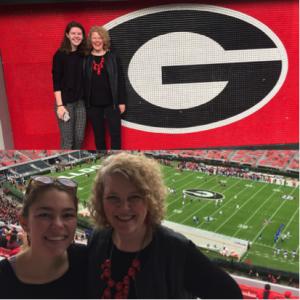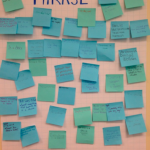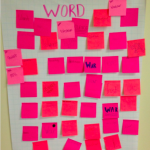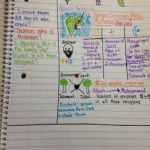How often in team meetings do we find ourselves on a brief tangent, an unexpected turn in a conversation that is sometimes distracting, while other times leads to a helpful insight. A year ago, it seemed my career was taking a tangent, diverging from World Languages to the base classroom. I felt like a kid on their first day in Spanish class. The classroom was familiar, yet everything I heard was in an obscure language. Number talks? Lucy Calkins? Running records? I was in the classroom but not the classroom I was comfortable in.
During the year, I found myself leaning into something very different and very stimulating. With guidance from the Sixth Grade leads, I tried my hand at teaching in the four academic classes. Lesson planning became an artistic process of learning, creating, and risk-taking. In my excitement for new subject areas, my mind continued to drift to World Languages. How did this all translate?
![]() This reflection harkens back to a pre-planning presentation from Maryellen a few years back about perspectives. I remember her talking about zooming in and zooming out. (Perhaps the TTT segment “WHAT IS THAT?” comes to mind.) I spent a year zooming out, and looking at children with a new lens. I sat in on parent sharing conversations and graduation practice. I dabbled in new curriculum, Opera rehearsals, and field trips. A year later, I’m zooming back in, making a b-line to language instruction, while seeing the big picture of Sixth Grade life.
This reflection harkens back to a pre-planning presentation from Maryellen a few years back about perspectives. I remember her talking about zooming in and zooming out. (Perhaps the TTT segment “WHAT IS THAT?” comes to mind.) I spent a year zooming out, and looking at children with a new lens. I sat in on parent sharing conversations and graduation practice. I dabbled in new curriculum, Opera rehearsals, and field trips. A year later, I’m zooming back in, making a b-line to language instruction, while seeing the big picture of Sixth Grade life.
So, how did this translate? Like a number talk, I look for flexibility and creativity in language production. The Lucy Calkins mini-lesson architecture informs writing and grammar lessons. The World Languages team uses benchmark assessments, similar to a running record, to track growth in language production over time.
At the time, I could not see how spending a year in the base classroom might better prepare me for language education. Now I cannot help but wonder what other tangents I might take to new areas of growth.
Learner, Thinker, Writer: Julia Kuipers serves the Trinity School community as a World Languages Teacher & Sixth Grade Associate.
Photo: “www.freeiconspng.com.” Web. 03 Oct. 2016.







![photo[2]](http://blogs.trinityatl.org/flourish/files/2013/04/photo2-1wjzrhp-150x150.png)